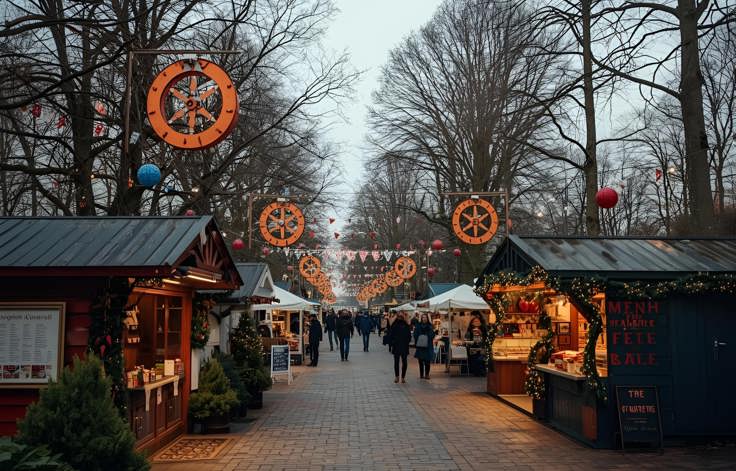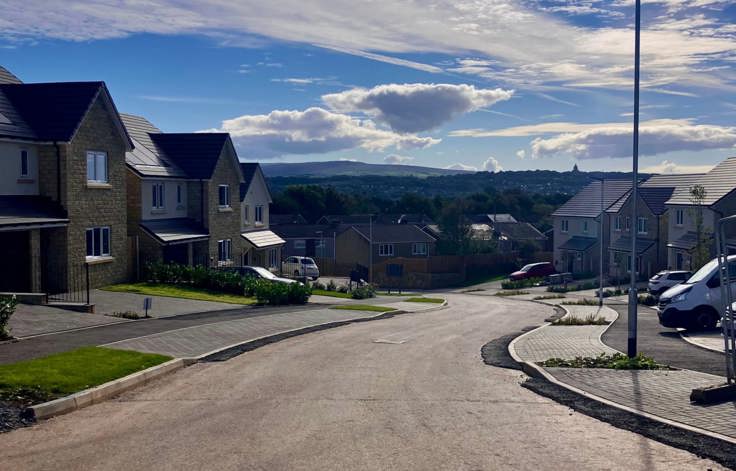An accurate property valuation you can trust
We'll help you to find the value of your property, so you can find a buyer or tenant as soon as possible.
Enter your details below to book a professional appraisal.
Rightmove House Price Index - September 2025 Market Review
The UK housing market has entered autumn with a mixed outlook. The average asking price for homes across Great Britain rose by 0.4% in September 2025 to £370,257 - the first monthly uptick since May. Even so, prices remain 0.1% below the same period last year, reflecting softer conditions in London and the South versus more resilient markets in the Midlands and North. This small annual dip is significant, as it marks the first time since January 2024 that prices have been lower on an annual basis, underscoring the impact of sustained competitive pricing over the summer on the market.

Despite this, the housing market is showing encouraging signs of stability. The rise in agreed-upon sales and the improvement in affordability, driven by lower mortgage rates, are helping to balance the picture. Buyers who were hesitant earlier in the year may now see this as a window of opportunity to act before any changes in tax policy or interest rates in late 2025.
National picture: prices, sales & affordability
- Average asking price: £370,257 (+0.4% month-on-month, -0.1% year-on-year). While modest, the monthly rise signals renewed activity after three consecutive months of decline. Sellers who had adjusted expectations during the summer have created more realistic conditions for buyers.
- Sales agreed: +4% year-on-year overall; outside London and the South +5%, while the South still records +3%. This increase highlights that demand is resilient, particularly when properties are priced sensibly in line with local conditions.
- Mortgage rates: Average 2-year fixed at 4.52%, down from 5.03% in August 2024. For the average buyer, this equates to savings of nearly £100 per month on repayments (20% deposit, 30-year term). This drop has eased pressure on affordability, making moves more viable for many households.
- Seasonal context: September typically brings renewed buyer interest post-summer. This year's +0.4% rise is slightly below the long-term average of +0.6% for September, reflecting a stable but cautious return to activity.
The national market continues to be shaped by a combination of static house prices, rising wages, and slightly cheaper mortgage products. Buyers are more confident when affordability aligns with realistic seller pricing, and this is evident in the higher levels of transactions being agreed upon. Overall, the message is one of balance: prices are steady, choice is plentiful, and conditions are more favourable than in much of 2024.
Regional trends: South vs North
A clear divide persists between southern and northern markets, with supply and affordability playing decisive roles in outcomes. Southern regions remain more vulnerable due to oversupply and the higher proportion of homes at risk from taxation changes, while northern regions continue to attract buyers seeking better value.
- Stock on market: Homes for sale are up +9% year-on-year in the South of England compared with just +2% across the rest of Great Britain. With more competition, sellers in the South are under pressure to reduce prices or present properties more attractively to secure buyer interest.
- Time to find a buyer: Homes in the South take around five days longer to secure an offer compared with the North and Wales. Scotland continues to stand out with some of the fastest sale times across the UK, reflecting a robust pool of demand.
- West Midlands: The only more northern region to see a small annual dip in asking prices (-0.1%), underlining how unusual it is for northern regions to follow the southern trend.
- North West: Asking prices are +3.2% year-on-year, well ahead of the national average, making the region one of the strongest performers in 2025.
This divergence highlights the “two-speed market” narrative. Sellers in the South face longer transaction times and heavier competition, while sellers in the North enjoy stronger demand and greater pricing power. For buyers, this translates into more affordable options and better negotiating opportunities in the South, while in the North, the emphasis is on moving quickly for well-priced homes as competition remains strong.
Regional differences are likely to widen further if property tax changes are implemented, as higher-value southern markets would shoulder the bulk of the impact. At the same time, northern regions may remain largely unaffected.
Tax talk: who could be most affected?
Speculation about potential property tax changes is shaping market sentiment, especially at the upper end of the ladder. The government is considering options that could reshape stamp duty or introduce a new “mansion tax.”
- Transactions over £500,000: Would affect around 59% of sales in London compared with 22% outside London and just 8% in the North East. This shows how skewed the impact would be towards higher-value southern markets.
- £1.5m+ properties: Around 11% of London homes fall into this bracket compared with only ~2% elsewhere, reinforcing that any mansion tax would disproportionately target the capital.
Rightmove's real-time data shows no immediate behavioural shift among buyers or sellers. Still, prolonged uncertainty ahead of the Autumn Budget on 26 November 2025 could encourage some movers, especially those at higher price points, to pause until details are confirmed. For the rest of the country, particularly northern regions, the effect of such taxes would be far less pronounced, leaving their markets relatively insulated from these policy changes.
Affordability & buyer segments
Improved affordability is a key theme in 2025, with falling mortgage rates and steady wages helping to support confidence. Each buyer segment has been affected differently by the changing market:
- First-time buyers: Typical property at £227,133 (+0.4% MoM, -0.2% YoY). Entry-level homes remain competitive, with first-time buyers benefitting most from lower borrowing costs. However, affordability remains a challenge in the South, where deposits and upfront costs continue to be significant hurdles.
- Second-steppers: Typical property at £345,058 (+0.3% MoM, +0.6% YoY). This segment, often young families moving from starter homes, is driving a large share of the current activity. Many are keen to upsize while conditions remain relatively stable and mortgage rates are lower than last year.
- Top of the ladder: Typical property at £669,139 (-0.5% MoM, -0.2% YoY). This part of the market faces the greatest uncertainty, with wealthy buyers becoming more cautious amid tax rumours and the ongoing regional demand divide.
Collectively, these figures reveal a market where affordability improvements are being felt most keenly in the entry- and mid-level sectors, fuelling stronger activity. Higher-value properties are slower to move, but attractive opportunities still exist for buyers willing to act decisively before potential tax changes take effect.
Method note
Rightmove's index reflects asking prices at listing, the very first stage of the home-selling journey. In September 2025, the index measured pricing on 104,921 newly listed properties across Great Britain. This makes it the UK's largest and most timely dataset for early market sentiment. Unlike indices that capture prices through mortgage applications or final sales, Rightmove's data provides insight into how sellers are positioning themselves today and how buyers are responding in real-time.
What this means for the North West
For buyers and sellers across Lancashire, Cumbria, and Merseyside, conditions remain supportive. With asking prices up 3.2% year-on-year and buyer demand staying strong, the North West continues to outperform the national average. Sellers benefit from a healthy pool of motivated purchasers, while buyers still enjoy affordability levels far superior to those in the South East and London.
The North West's resilience is underpinned by several factors: comparatively lower property values, consistent demand from both local buyers and relocators, and growing investment in infrastructure and regeneration projects. Cities like Manchester, Preston, and Liverpool continue to attract professionals and families thanks to improved transport links and expanding employment hubs. At the same time, areas of Lancashire and Cumbria continue to attract buyers seeking space, a desirable lifestyle, and affordability.
This balance of affordability, opportunity, and long-term stability suggests that the North West will remain one of the most attractive regions for both homeowners and investors moving into 2026. For those looking to move, now may represent a favourable time to secure a property before demand intensifies further.
Thinking of selling or buying?
We blend deep local knowledge with live market insight to help you move with confidence - from accurate valuations to expert sales support. Our teams across the North West understand the nuances of today's market and are on hand to help you achieve the best result, whether you're stepping onto the ladder, upsizing, or planning a sale.
Visit Farrell Heyworth to get started.
Related Posts
What Happens If My Mortgage Lender Values the Property Lower Than My Offer Price?
How Down Valuations Affect Your Purchase A lower valuation creates a shortfall between: The price you agreed with the seller…
Blackpool's Tower Festival Headland Becomes a Magical Festive Village This Winter
Christmas by the Sea Returns - Bigger & More Spectacular Set against the backdrop of the famous Blackpool Tower, the…
Vale Meadows Lancaster - Phase 2 Progress: What It Means for the City
What Is Vale Meadows? Located on Watery Lane in Lancaster, Vale Meadows offers a wide choice of property styles including…



